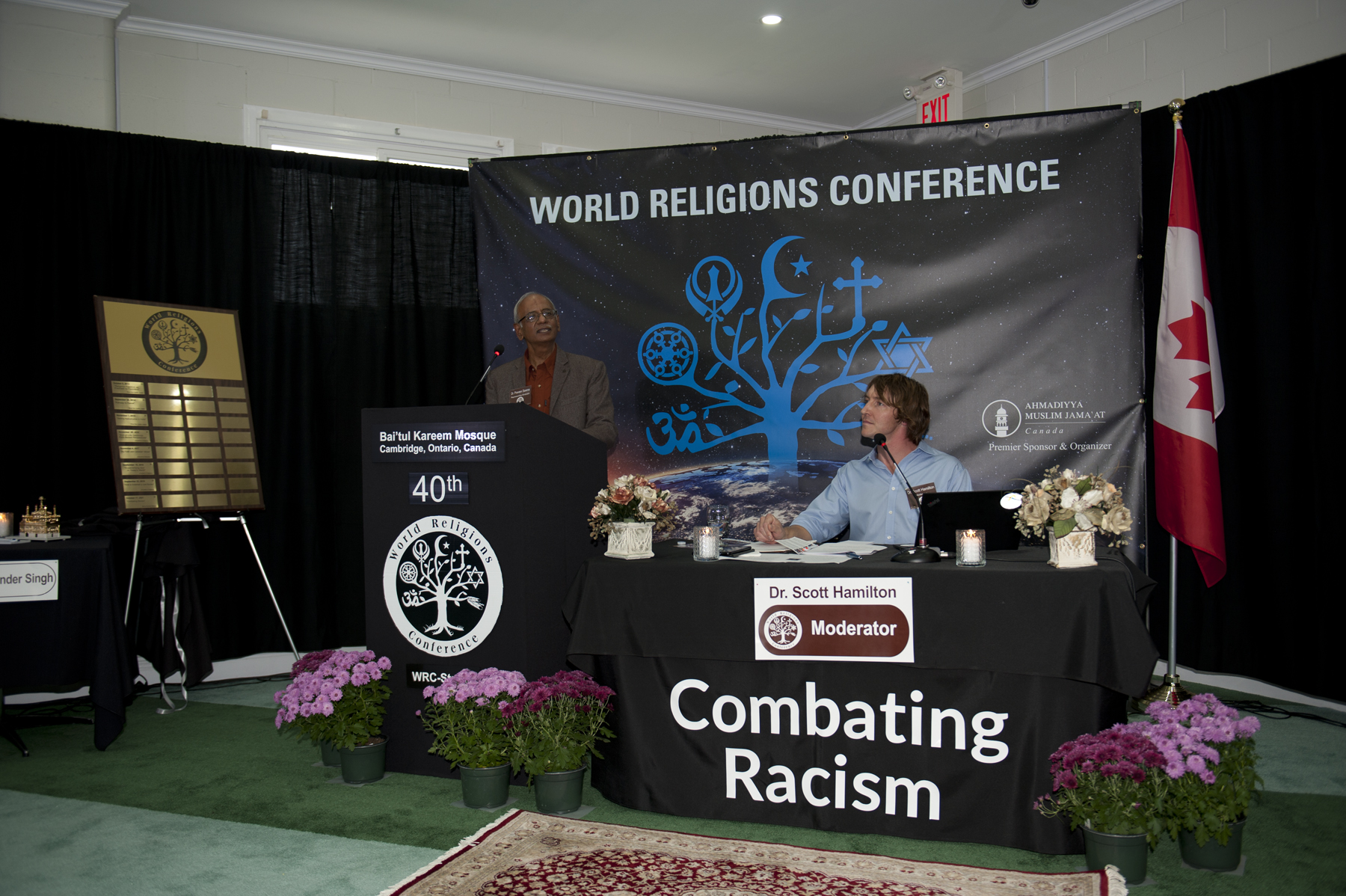Combating Racism
Hindu Perspective
by Dr. Praveen K Saxena
Univ of Guelph Professor
Brahmarishi Mission of Canada

Abstract of Theme Speech
This presentation will highlight the relevance of an ancient Indian system of human classification developed to prevent the occurrence of racial discrimination. The definitions of race, racism, and racial discrimination vary based on prevailing conditions of affected societies and have evolved over time. The Ontario Human Rights Commission has defined the term Race as “socially constructed differences among people based on characteristics such as accent or manner of speech, name, clothing, diet, beliefs and practices, leisure preferences, places of origin and so forth”. Further, Racism or Racialization is “the process by which societies construct races as real, different and unequal in ways that matter to economic, political and social life.” Simply stated the belief of race artificially divides people into distinct groups based on certain characteristics and racism implies a systemic discrimination of targeted racial groups by individuals who hold more power socially, economically, and politically. Racism and racial discrimination are different and this difference, albeit subtle, is significant. Racism is the belief that one race is superior to another based solely on attributes assigned to the races and it may remain innocuous without any serious consequences. However, the influence of racist beliefs on the judgement and decision constitutes discrimination. Unfortunately, the racism and racial discrimination feed each other, consciously and unconsciously, turning the racist individuals in power into discriminating authorities. Thus, discrimination of a race whether intentional or not, often withholds or limits its access to the opportunities and benefits available to other members of the society.
Sanatan Dharma, commonly referred to as Hinduism, has recognized that the fundamental feature which fosters racism is an inherent human tendency to discriminate regardless of their origin, faith, and societal stature. In other words, discrimination is as old as human existence. The Rig Veda, one the most revered scriptures of Sanatan Dharma, described a system which rendered innate immunity against discrimination. This approach was based on the classification of humans according to their strength, encouraging them to excel in trades of their interest. The system, stated in the verses of ‘Purusha Sukta’, delineates that human originate from the body of the Purusha, the supreme power or God, and fall into four types or varnas: Brahmins, Kshatriyas, Vaishyas, and Shudras.
Brahmins emerge from the mouth of the cosmic person (God), represent knowledge, divinity, and education, and constitute the community of priests, teachers, and saints. Kshatriyas emerge from the arms of God, represent power, and constitute the community of warrior, kings, administrators with duties to maintain law and order and justice. Vaishyas originate from the thighs, represent economic strength including trade and commerce, and function to ensure the prosperity of the society. Shudras emerge from the feet, represent the service class which includes attendants, craftsman, and labourers, as well as those who assist the other three varnas.
All four varans were recognized based on their respective aptitudes and strengths and respected as integral components of a harmonious society. This division was not based on birth as individuals of any varna could acquire the knowledge and traits of any of the other varnas. The aptitude and strength based division of duties is inherently conducive to eliminating discrimination and thus promoting harmonious existence of people in the society. There are numerous examples in the Ramayana and the Bhagavad Gita, two key texts of Hinduism, that illustrate the significance of mutual respect among all varnas. In both texts, the human incarnation of God displays equal respect, compassion, and connectedness to all classes of the society including the living and non-living elements of nature. The system was widely adopted in ancient India and the children from all sectors including the royal families were sent to common schools allowing them to discover and hone their inherent potentialities regardless of their family ties. Unfortunately, this classification was later misinterpreted as a hierarchical system based on birth, placing one class above the other due to ignorance, greed, and hunt for political power, economic supremacy, and superior social status. This exercise, although considered unethical and unacceptable in many government and business sectors, continues as casteism even in reformed modern India.
In addition to the virtue-based classification, the philosophy of oneness is another hallmark of Sanatan Dharma and offers a unique and effective strategy to combat racial or any other kind of discrimination. The philosophy of oneness asserts that we all are reflections of the supreme just like the images of the moon in millions of ponds on earth and the goal of our life is to discover our true origin and connection to the supreme power. This concept of oneness is defined as Yoga, the sacred union of the soul or “Atman” with “Paramatman” (God), which represents the highest level of consciousness. The practice and realization of Yoga through meditation can free us from the root cause of discrimination, the desire to be superior to others. Recent scientific research has demonstrated that a meditative mind may bless us with moral strength, humility, and liberation from self-centeredness.
The wisdom of seeing benefits in collective wellness is strongly advocated in verses of many Hindu religious texts. An example of such verses used in the daily Hindu prayers is “Sarve Bhavantu Sukhinah Sarve Santu Niraamayaah, Sarve Bhadraanni Pashyantu Maa Kashcid-Duhkha-Bhaag-Bhavet”. “May all be happy, free from infirmities, see auspicious all around, and none suffers from sorrow”. Further, a couplet from the Ramayana states “Parhit Saris Dharam nahi Bhai, Parpida Sam Nahi Adhamai” which means that here is no bigger Dharma than benevolence and there is nothing eviler than hurting others. In sum, a peaceful, progressive, and prosperous society is possible only when everyone has equal opportunity to work and enjoy a life free of social, political, and institutional discrimination.


